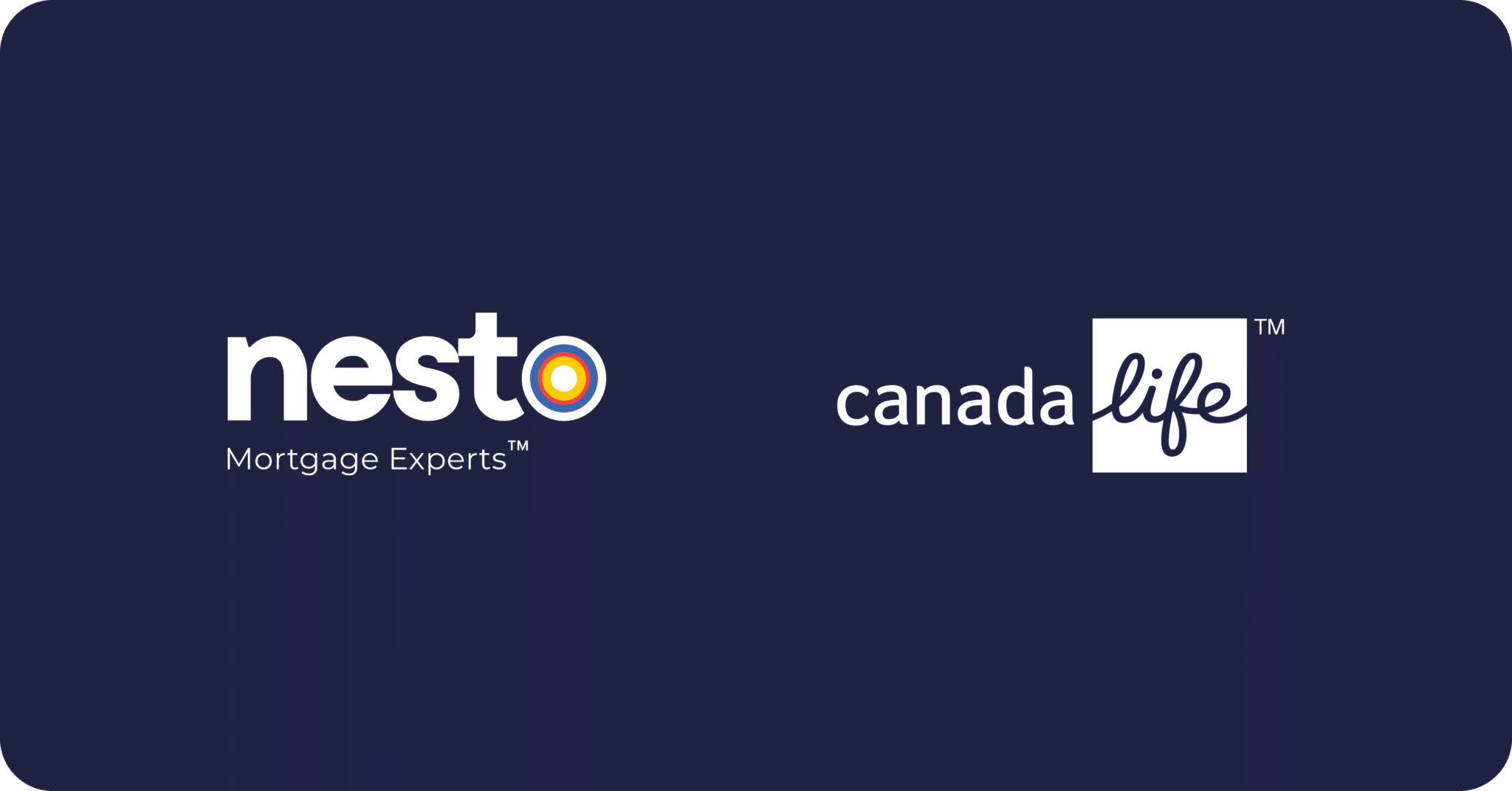Mortgage Default Insurance Calculator
Saving for a sufficient down payment is one of the largest obstacles first-time homebuyers face across Canada. Mortgage default insurance is also known as mortgage insurance, CMHC insurance, or high ratio insurance. This type of insurance allows borrowers to qualify for mortgages with a smaller down payment.
Mortgage default insurance is required for all mortgages with down payments less than 20% where the purchase price is below $1 million. Default insurance is not available for purchases over $1 million. This also applies to purchasing investment properties or refinancing a property you already own. Canada’s minimum down payment requirement is 5% for the first $500,000 and 10% for any portion above that threshold.
Simply put, a missed mortgage payment could put your mortgage into default. Default insurance provides security for your lender and protects them if you cannot make your mortgage payments.
Note: It is important not to confuse creditor protection (mortgage life insurance) with mortgage default insurance. Both types of insurance are often called “mortgage insurance” interchangeably.
Check out What is Mortgage Life Insurance? Is It Required in Canada? to learn more about creditor protection insurance.
Mortgage Default Insurance Calculator
What is Mortgage Default?
Mortgage default occurs when a homeowner fails to uphold the agreed-upon terms defined in the mortgage contract they signed when taking out their mortgage. It’s possible to default on a mortgage in a few ways, the most common being if a mortgagor (the borrower in a mortgage contract) stops making payments.
Are you a first-time buyer?
We’re curious…
Are you a first-time buyer?
Which Insurers Offer Mortgage Default Insurance?
Mortgage default insurance is offered by private companies, Sagen (formerly Genworth Canada) and Canada Guaranty (formerly AIG Canada), as well as the Canadian government through its Canadian Mortgage and Housing Corporation (CMHC).
Government-backed mortgage loan insurance helps make it easier for Canadians to buy homes with smaller down payments or higher debt ratios than would otherwise be allowed without it.
All insurers provide high-ratio mortgages (where the buyer has less than 20% in down payment or equity) and low-ratio mortgages (where the buyer has 20% or more in down payment or equity). Low-ratio insurance (also known as portfolio insurance) is lender-paid to reduce their own risk.
The cost of default insurance depends on several factors, such as the size of your down payment, the amount borrowed, and whether you pay for it upfront or add it to your monthly payments. If you add it to your mortgage, then the interest-carrying cost of the additional mortgage will make it a costlier option.
Canada Mortgage and Housing Corporation (CMHC)
The Canada Mortgage and Housing Corporation (CMHC) is a Crown corporation established in 1946 as part of the Government of Canada’s efforts to improve housing affordability and conditions in Canada. CMHC helps Canadians meet their housing needs by providing mortgage loan insurance, loans and grants, market research, industry-leading data and analysis, community development initiatives, and housing system advice.
Through its mortgage loan insurance services, CMHC provides security to lenders when issuing home loans. The insurance they provide ensures that if the borrower defaults on their payments, the lender can recover their losses. This service allows Canadians to purchase homes with smaller down payments. CMHC offers other services, such as grants and loan programs for homeowners struggling with renovations or repairs and potential first-time homebuyers.
In addition to providing services directly to Canadians, CMHC also works with other public and private organizations to help ensure our country has an adequate supply of affordable housing available for people at different income levels. By investing in research and connecting with partners nationwide, CMHC helps promote long-term solutions that address today’s most pressing housing issues.
Sagen (formerly known as Genworth)
Sagen has been a Canadian private mortgage default insurance provider in business for over 35 years. A spin-off of the various insurance companies in the GE Money group. Like CMHC, Sagen provides various services, including mortgage insurance, loan origination, and loan servicing. They also offer financial advice and assistance to their clients.
Canada Guaranty (formerly AIG Canada)
Canada Guaranty is one of Canada’s leading private mortgage default insurers. It has provided this indispensable insurance protection to Canadian lenders since the company’s founding in 2004. Canada Guaranty also offers unique products for self-employed borrowers or borrowers with non-traditional incomes.
How to Qualify for Mortgage Default Insurance
Qualifying for a default-insured mortgage can be complicated. Generally, you must have a down payment of at least 20% of the home’s purchase price to qualify for a conventional mortgage loan. If you cannot make this down payment, you may need to purchase mortgage default insurance, which protects your lender if you ever default.
The maximum amortization for insured mortgages is 25 years. Lenders will usually require that your total debt service ratio be less than 44% and your gross debt service ratio be less than 39%. Lenders may also require an acceptable credit score and sufficient income to cover your monthly payments.
The following criteria apply when arranging a default-insured mortgage:
- Show good character and credit repayment history with a minimum 600 FICO credit score (some lenders may require a higher score to keep their risk to a minimum).
- Have a maximum gross debt service (GDS) ratio of 39% and a maximum total debt service (TDS) ratio of 44%.
- Purchasing a home in Canada priced less than $1 million.
- Have selected a mortgage with a maximum amortization of 25 years.
- Have a minimum down payment of 5% saved up.
- Have a minimum of 1.5% to 4% in closing costs saved up, which may include your legal fees, appraisal fees, land transfer taxes, home inspection fees, and administrative and peripheral costs for a timely closing.
How to Calculate Mortgage Default Insurance Premium
Loan-to-Value (LTV) ratio is essential in determining the mortgage default insurance premium. The higher the LTV ratio, the higher the premium will be. The LTV ratio is calculated by dividing the amount borrowed by the appraised value or purchase price of the property, whichever is lower.
The down payment size will determine your loan-to-value (LTV) ratio and whether you must also purchase mortgage default insurance. LTV is also critical to mortgage rate pricing.
Generally, borrowers with an LTV ratio of 80% or less are not required to purchase mortgage default insurance. However, if a borrower has an LTV ratio of more than 80%, their lender must purchase mortgage default insurance on their behalf from one of three national default insurers. The premiums for this type of insurance vary depending on the mortgage loan-to-value (LTV) ratio.
Below is a table outlining the premiums for mortgage default insurance at CMHC based on LTV, but the same premiums apply to all insurers:
| Loan-to-Value | Premium on Total Loan |
| Up to and including 65% | 0.60% |
| 65.01% to 75% | 1.70% |
| 75.01% to 80% | 2.40% |
| 80.01% to 85% | 2.80% |
| 85.01% to 90% | 3.10% |
| 90.01% to 95% | 4.00% |
How to Pay for Mortgage Default Insurance?
Mortgage insurance is either payable upon closing or can be rolled into your monthly mortgage payments. This second option makes it subject to interest, so it’s essential to understand what each option involves from a financial perspective.
Mortgage default insurance costs borrowers 2.8%-4% of the mortgage amount, which in turn allows Canadians who may not otherwise be able to purchase homes to become homeowners.
Without this insurance, mortgage rates would be higher, as the risk of default would increase. Lenders can offer lower mortgage rates when mortgages are protected by mortgage default insurance because the risk of default is passed to the insurer.
Although this insurance is added to your mortgage, the taxes (PST) on purchasing this insurance are not. Upon your closing, your solicitor will collect and remit the PST on behalf of the high ratio insurer (CMHC, Sagen, or Canada Guaranty). Once the high ratio default insurance is purchased from one of the three default insurers, the risk to the lender is reduced as the default insurance will protect them in case of default.
Important: Mortgage insurance is payable upon closing or can be rolled into your mortgage payments. This second option makes it subject to interest, costing you more over time.
How to Minimize Mortgage Default Insurance Payments
The only way to minimize mortgage default insurance payments is to either make a larger down payment or buy a less expensive home. That’s because, as mentioned above, mortgage default insurance is calculated as a percentage of the loan based on the size of your down payment. The higher the percentage of the total home purchase price and the amount that you borrow, the higher percentage you’ll pay in insurance.
If you make a down payment of at least 20% of the home’s value, you aren’t required to pay mortgage default insurance.
In many cases, your overall interest savings can be paramount if you put a 19.90% down payment on your home purchase. The lowest default insurance premium applies with down payments between 15% and 19.99%. By applying a down payment of 19.90%, you could still have an insured mortgage while keeping your balance to a minimum.
Additionally, your mortgage balance will be reduced if you pay the default insurance premium in cash instead of adding it to your mortgage. You can benefit from a reduced interest rate and mortgage balance by getting a high ratio insured mortgage interest rate.
How nesto works
At nesto, all of our commission-free mortgage experts hold concurrent professional designations from one or more provinces. Our clients will receive the best advice and care when they speak with specialists that exceed the industry status quo.
Unlike the industry norm, our agents are not commissioned but salaried employees. This means you’ll get free, unbiased advice on the most suitable mortgage solution for your unique needs. Our advisors are measured on the satisfaction and quality of advice they provide to their clients.
nesto is working hard to change how the mortgage industry functions. We start with honest and transparent advice, followed by our best rates upfront. We can offer you these low rates using the fintech industry’s best-in-class and safest technology to provide a 100% digital online experience and process to reduce overhead costs.
By working remotely across Canada, all our mortgage experts and staff spend less time commuting to work and more time with their friends and family. This makes for more dedicated employees and contributes to our success with happy and satisfied clients.
nesto is on a mission to offer a positive, empowering and transparent property financing experience, simplified from start to finish.
Reach out to our licensed and knowledgeable mortgage experts to find your best mortgage rate in Canada.














